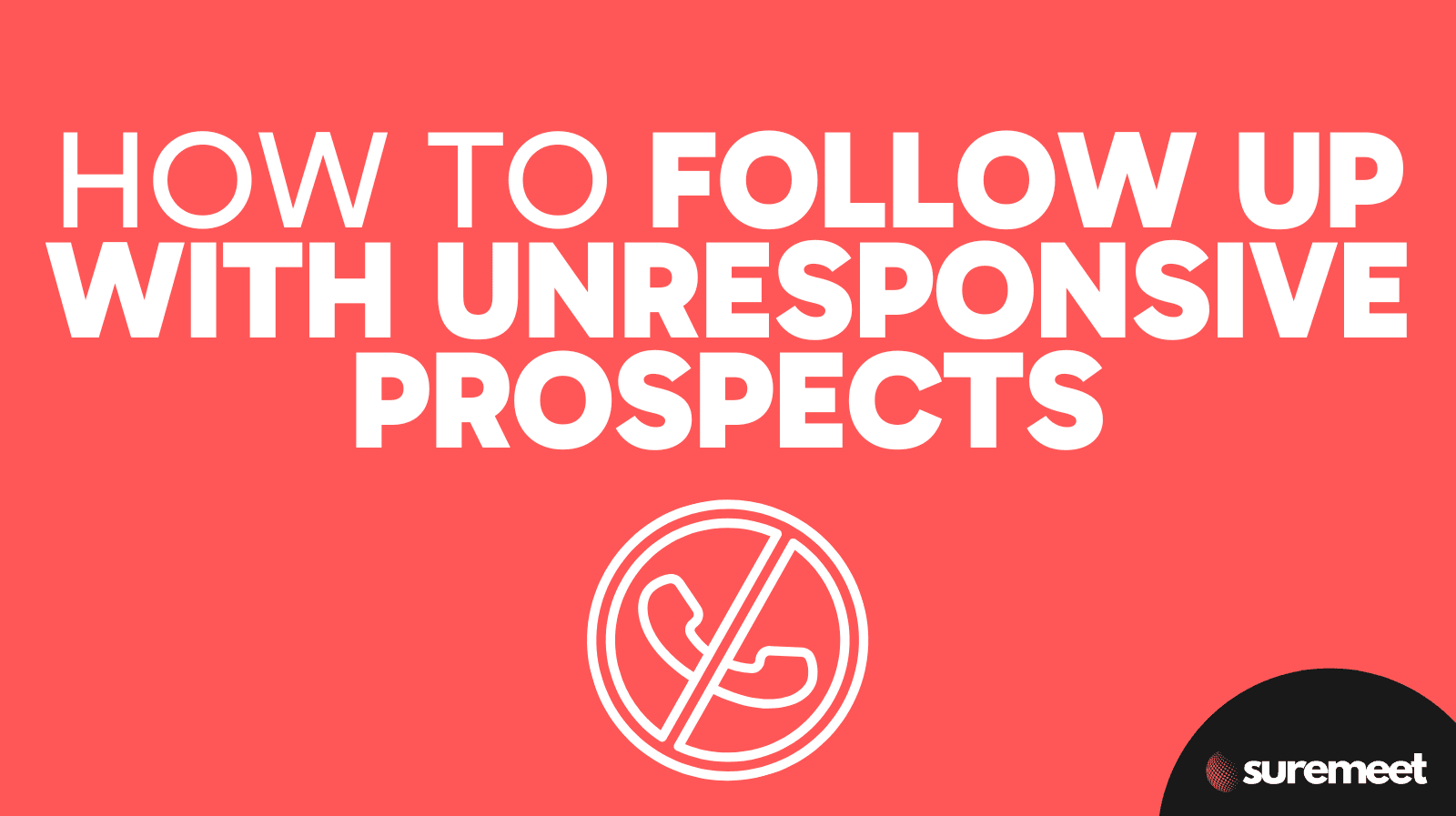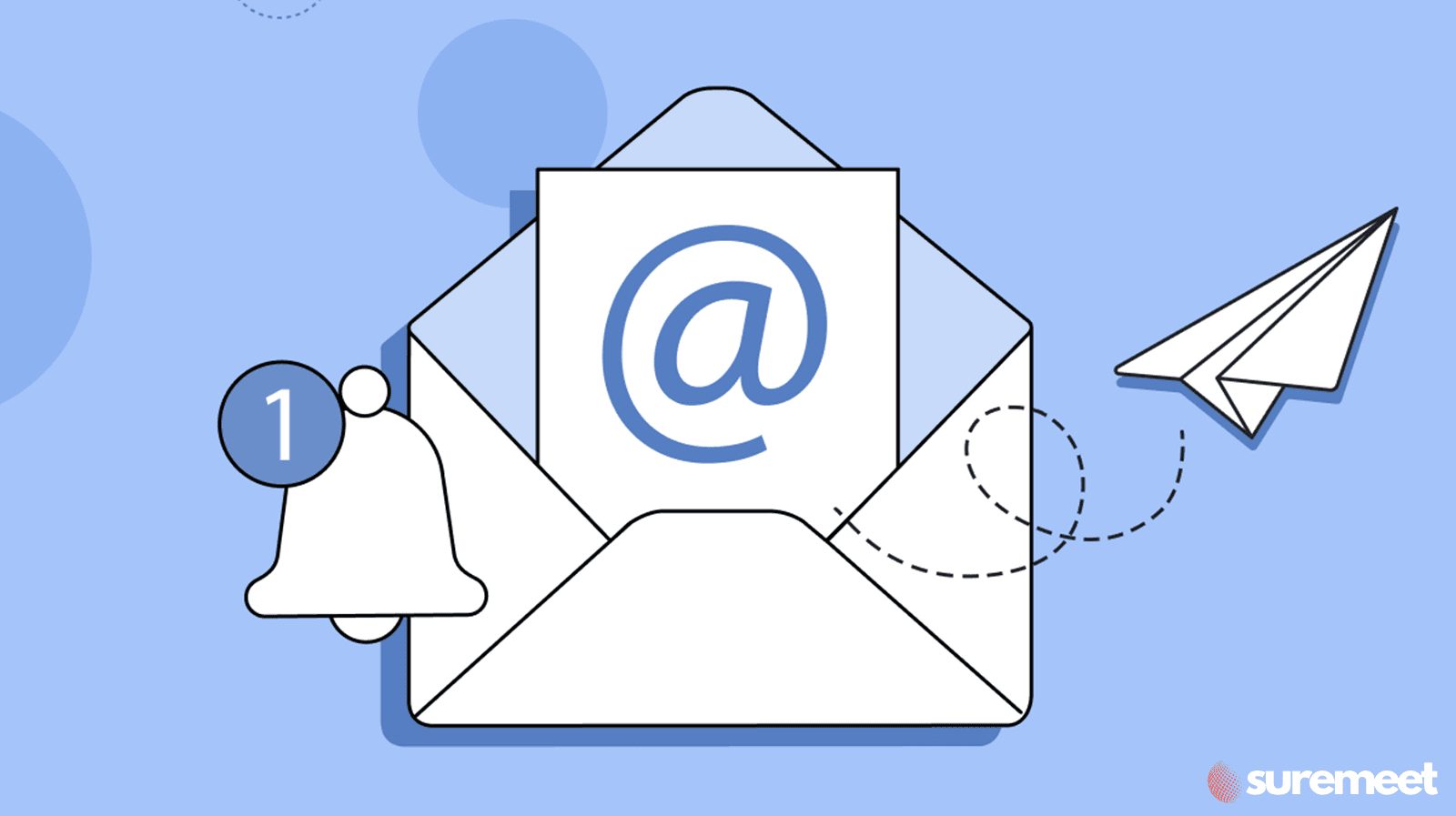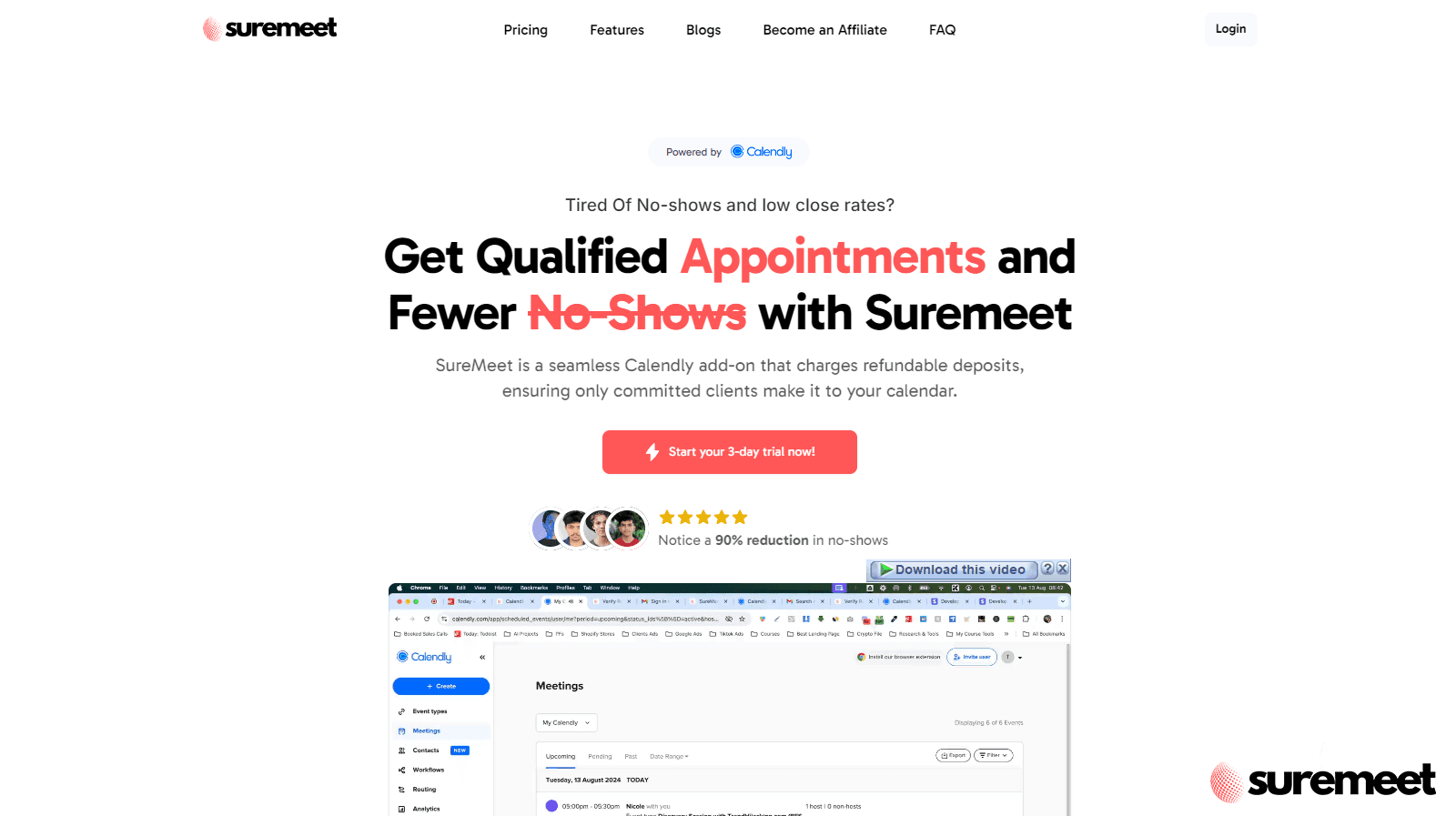
How To Follow Up With Unresponsive Prospects
Oct 1, 2024
No-shows are one of the most frustrating things in business. You’ve set aside time, prepared your pitch, and then your prospect slaps you with a no-show!
But as annoying as it is, no-shows don’t mean you’ve lost the opportunity.
Knowing how to follow up with prospects who don’t show up can often be the difference between a missed opportunity and a closed deal.
So, how do you re-engage that elusive prospect without seeming desperate?
In this article, we’ll dive into the effective follow-up strategies that can help you maintain professionalism, keep your sanity, and hopefully close more deals.
Importance of follow-up with unresponsive prospects

Before we get into more details, let’s first discuss why it’s important to follow up on your no-show prospects.
Following up is more than just about being polite—it’s essential to the sales process.
Here’s why it matters:
Builds trust: Regular, thoughtful follow-ups show will help you send a clear message to your prospects that you’re committed to helping them and that you’re reliable. Over time, this builds trust, which is crucial for closing deals.
Maximizes opportunities: Not every prospect will make a decision after the first meeting. Sometimes, it takes a few nudges to get them moving in the right direction. Hence, the need for follow-ups!
Increases conversion rates: Effective follow-up strategies will also help keep you on a prospect’s radar. If they’re comparing multiple vendors, the one who follows up professionally is more likely to win their business.
By following up with your leads persistently (without being annoying or sounding desperate), you can turn no-shows into new opportunities.
Let’s now focus on how you can follow up with your prospects professionally…
Stay calm and professional

Before you start drafting an angry email asking, "Where were you?!" take a deep breath. No-shows happen all the time, and sometimes there’s a valid reason for them.
Life gets busy, technology fails, or a genuine emergency could’ve come up.
Thus, the first thing to do is remain calm and professional.
Instead of jumping to conclusions, consider sending a polite and short follow-up message.
This is the best way to follow up with customers without sounding pushy or annoyed.
You want to remind your prospects about the missed meeting without making them feel guilty (even though you might want to).
You can say something like this:
"Hi [Name], I hope everything’s okay on your end! I noticed we missed our meeting earlier today and just wanted to check if you’d like to reschedule. Let me know what works best for you!"
This kind of message shows that you value their time and that you're not holding grudges.
Come up with the perfect follow-up email

The perfect follow-up email shouldn’t be about shaming or confronting your qualified lead for standing you up.
Instead, it is about being tactful and professional and keeping the lines of communication open.
Here are some helpful tips for crafting a perfect follow-up email:
Timing is everything: Ideally, send your follow-up within a few hours after the missed meeting. Too soon, and you might seem too eager; too late, and they might forget about you entirely.
Be brief and polite: A quick note like the one above works well. People are busy, and you don’t want to drown them in a novel. Keep it light, short, and sweet.
Add a Call to action: Don’t just end your email with “Let me know when works.” Be specific! Offer them options like, “I’m available Tuesday at 10 AM or Thursday at 3 PM—let me know what works best.”
Use personalization: Reference something specific from previous conversations to jog their memory and show them you're genuinely invested.
For example: "I’d love to discuss how we can implement [specific solution discussed] into your business!"
This approach can turn an awkward situation into a new opportunity!
Diversify your communication channels

If your prospect still hasn’t responded to your email (and now you’re getting really nervous), it’s time to mix things up.
Email is great, but sometimes people ignore their inboxes—especially if they’re dodging you.
The best trick here would be to switch tactics. Here are a few options to consider:
Send a follow-up customer message via WhatsApp: If you have their phone number, shoot them a quick, professional WhatsApp message.
Keep it casual: “Hey [Name], hope you’re doing well! I noticed we missed our call earlier—do you have time later this week to reschedule?”
Give them a call: A quick phone call can sometimes work wonders. Just remember to keep the call short, friendly, and direct. If they don’t answer, leave a polite voicemail asking for a callback.
Connect on LinkedIn: If they’re more of a LinkedIn type, send them a direct message there. Keep it similar to your email follow-up, and avoid being pushy.
By using different channels to reach out to your potential clients, you’re increasing your chances of reconnecting, without sounding desperate or annoying.
This is one of the best ways to follow up with a client without being pushy!
Personalize (Tailor your follow-up to the prospect)

One of the most important things you’ll come to learn sooner or later is that no two prospects are the same.
As such, why should your follow-up messages be the same? Personalization is one of the most effective follow-up strategies in sales used by other business owners out there.
Make sure you tailor your approach to the individual you’re dealing with.
Reference a prospect’s pain points: Remind them why they wanted to meet with you in the first place. Mention something specific from earlier conversations to show that you’re attentive to their needs.
For example: "I know you're looking for ways to streamline your client onboarding process—let's discuss how I can help!"
Add value to your follow-up: Don’t just ask to reschedule—give them a reason to want to talk to you. Share a relevant article, send over a case study, or offer a free resource. This makes it harder for them to ignore your message and shows you're committed to helping them, not just closing a deal.
This type of personalization helps you stand out and keeps your follow-up from feeling robotic or transactional.
How to handle multiple no-shows

Sometimes, despite putting in your best efforts, a prospect will still show no interest or be available.
That’s why we advise that after a few follow-ups, you may want to hold back and ask yourself if you’re barking up the wrong tree.
Here’s what you should do:
Establish a no-show policy: Set clear boundaries with prospects. If someone misses two or three meetings, let them know that you may not be available for another unless they’re serious about proceeding.
Know when to walk away: After a few unresponsive follow-ups, it’s okay to cut your losses.
You can send them a polite “closing” email, like:
“I understand if now’s not the right time for us to connect. Feel free to reach out when you’re ready, and we can revisit the conversation.”
This can help you maintain your sanity and focus on more committed prospects.
How often to follow up with your prospects

When it comes to follow-ups, timing is crucial. Plus, you want to ensure you don’t overdo it to the point of sounding desperate or annoying your client.
With that in mind, we have come up with a rough follow-up guideline for you to follow:
First follow-up: Within 24-48 hours after the missed meeting.
Subsequent follow-ups: Every 3-7 days, depending on the prospect’s level of interest. For warmer leads, follow up more frequently (every 3 days). For colder leads, spread it out to once a week.
After multiple no-shows: If the prospect hasn’t responded after three follow-ups, it’s probably time to stop. At this point, move on and leave the door open for future conversations.
Following this structure keeps you persistent but not overbearing, showing the right balance of engagement.
Follow-up plan example:

If you're not sure how to organize your follow-ups, here’s a simple plan you can use:
Day 1: Send your first polite follow-up email immediately after the no-show, offering to reschedule.
Day 3: If no response, send a follow-up customer message through another channel (WhatsApp, LinkedIn, etc.). Reference something specific from your previous communication.
Day 7: Send a final follow-up email, perhaps offering an incentive like a discount or special offer if they reschedule.
This plan keeps you top of mind without coming across as pushy or desperate. It's one of the best ways to follow up with prospects effectively.
STOP no-shows before they happen!

No-shows are not only frustrating but can also waste your valuable time and even derail your business goals.
While follow-up strategies are essential, an even better strategy would be to prevent no-shows and last-minute cancellations from your leads before they happen.
How to do that?
Enter SureMeet…
With the SureMeet tool, you’ll secure only serious, committed prospects, ensuring your meetings are productive and your time is respected every single time.
What SureMeet does:

SureMeet is designed to solve the no-show problem at its core by requiring your prospects to make a small, refundable deposit before booking a meeting.
This deposit acts as a filter for weeding out unqualified or uncommitted prospects.
When someone is willing to make even a small financial commitment upfront, it’s a strong indicator they’re serious about the meeting.
This simple step dramatically reduces no-shows and ensures you’re spending your time with genuinely interested people.
Here’s how SureMeet works:
Here’s a quick step-by-step process on how SureMeet works:
Step 1. Prospects pay a small deposit: Before they can book a meeting, prospects are required to pay a small refundable deposit. This deposit can be as low as $1 or as high as you prefer based on your business model.
Step 2. Non-refundable for no-shows: If the prospect doesn’t show up for the meeting, they forfeit the deposit. This encourages accountability and makes it less likely that someone will book without genuine interest.
Step 3. Refundable for those who show up: The refunds are seamless such that if the client shows up, you issue the refund by a click of a button. Or even better, you may consider applying it toward the cost of your service, keeping the process smooth and hassle-free for both parties.
Step 4. Easy integration: SureMeet integrates effortlessly with Calendly and Stripe, two popular tools many business owners already use. With just a few clicks, you can set up SureMeet, connect it to your scheduling software, and start filtering out uncommitted prospects.
Key benefits of SureMeet:

SureMeet doesn’t just reduce no-shows—it transforms how you handle meeting bookings.
By requiring that small deposit, you ensure that only serious prospects make it onto your calendar. This means:
More productive meetings: No more wasted time on people who aren’t serious about your services.
Increased show-up rates: The simple act of paying a deposit encourages people to stick to their commitments.
Better client engagement: When prospects pay, they’re more invested, which means they’re more likely to engage fully and prepare for the meeting.
Incorporating SureMeet into your booking process ensures that your time is spent on valuable, productive interactions rather than chasing down no-shows.
Try SureMeet with a 3-day free trial and see how it can transform your business by reducing no-shows and improving meeting efficiency.
Final Thoughts
Dealing with no-shows can be frustrating, but knowing how to follow up with prospects can make all the difference. By staying professional, diversifying your communication channels, and personalizing your approach, you can turn those missed meetings into new opportunities. Remember, persistence is key to winning in sales—just make sure to find that sweet spot between follow-up and frustration.
And of course, consider using a tool like SureMeet to drastically reduce no-shows in the first place. SureMeet helps you filter out uncommitted prospects by requiring a refundable deposit, ensuring only serious individuals book meetings with you. Give SureMeet a try today with the FREE 3-day trial and watch your no-show rate plummet!